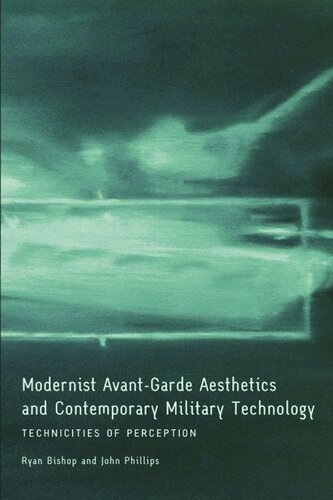

Most ebook files are in PDF format, so you can easily read them using various software such as Foxit Reader or directly on the Google Chrome browser.
Some ebook files are released by publishers in other formats such as .awz, .mobi, .epub, .fb2, etc. You may need to install specific software to read these formats on mobile/PC, such as Calibre.
Please read the tutorial at this link: https://ebookbell.com/faq
We offer FREE conversion to the popular formats you request; however, this may take some time. Therefore, right after payment, please email us, and we will try to provide the service as quickly as possible.
For some exceptional file formats or broken links (if any), please refrain from opening any disputes. Instead, email us first, and we will try to assist within a maximum of 6 hours.
EbookBell Team

5.0
48 reviewsGBS_insertPreviewButtonPopup('ISBN:9780748639885);
This book analyses the operation of current state-of-the-art military technology and the experimental art, music and writing of the late nineteenth and early twentieth century. Modernist aesthetics renders clearer the operations of the vast surveillance and killing machines of the twentieth and twenty-first centuries.
A basic aim of visual technologies is to collapse the sphere of perception with that of the perceived object. Modernist aesthetics, working the same terrain, shows that there always remains an irreducible element of time and space. Military technology tends towards the impossible goal of eliminating this dimension, while modernist aesthetics exploits it. Placing military operations alongside modernist aesthetics reveals the civic sphere suspended between two incompatible desires.
Through close readings of the art and writing of Djuna Barnes, Joseph Conrad, Marcel Duchamp, James Joyce, Mina Loy, Stephane Mallarme, the Italian Futurists and H. G. Wells alongside the Apache attack helicopters, Network-Centric Warfare, satellites, decoys, sirens and radios, the chapters address issues such as: targetting, surveillance, visibility and the invisible, broadcast and media, the military body, diasporas, geopolitics and beauty.
Key Features